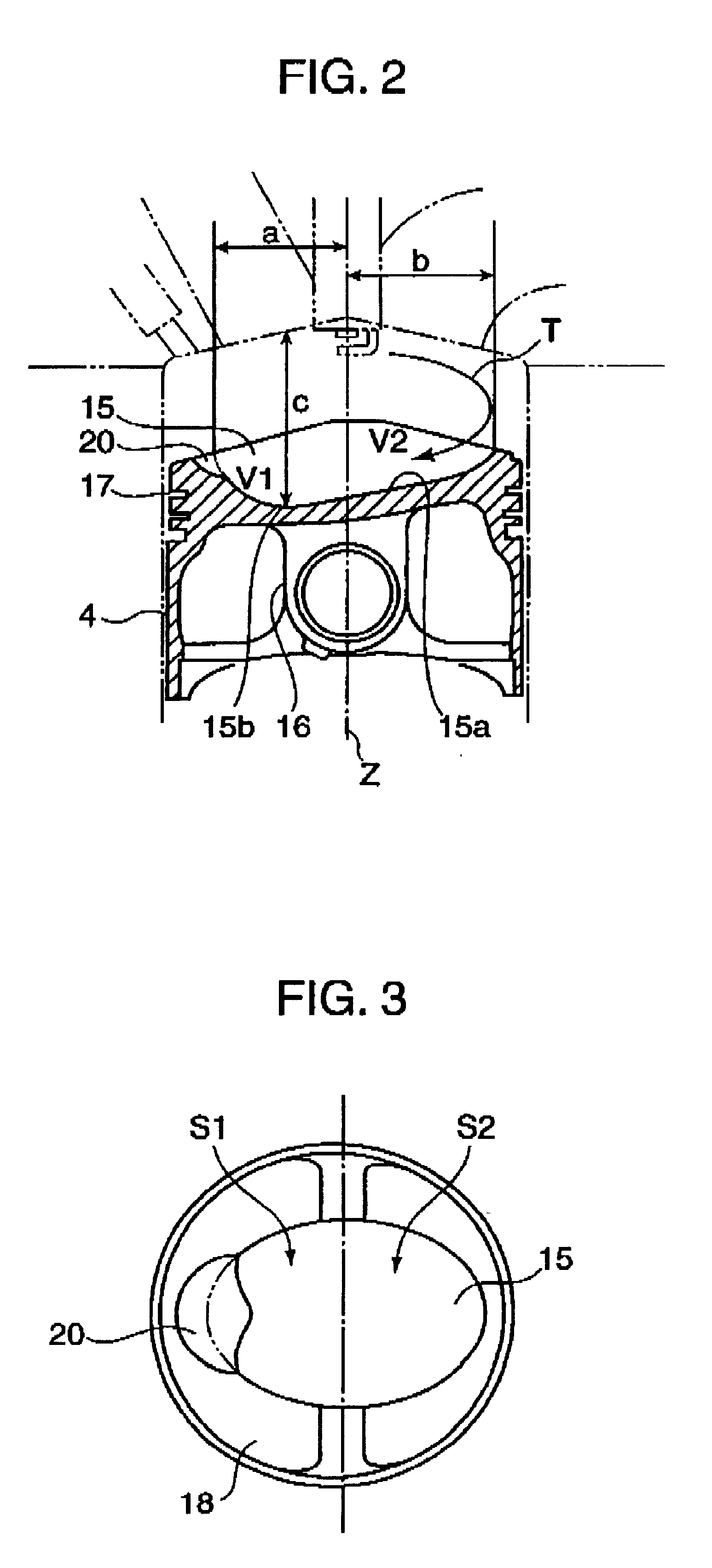Direct-injection spark-ignition engine
a spark ignition and injection technology, applied in the direction of combustion engines, machines/engines, cylinders, etc., can solve the problems of increasing the amount of hydrocarbon emissions, affecting the combustion process,
- Summary
- Abstract
- Description
- Claims
- Application Information
AI Technical Summary
Benefits of technology
Problems solved by technology
Method used
Image
Examples
first embodiment
FIG. 1 is a cross-sectional view showing the construction of a principal portion of a direct-injection spark-ignition engine according to the invention. As shown in this Figure, the engine comprises a cylinder block 2 in which a plurality of cylinders 1 are arranged, a cylinder head 3 mounted on top of the cylinder block 2, and a plurality of pistons 4 which are fitted in the in a manner that the pistons 4 can move up and down in the respective cylinders 1. There is formed a combustion chamber 5 in each cylinder 1 just between the piston 4 and the cylinder head 3. Each piston 4 is linked to a crankshaft (not shown) located below the cylinder block 2 via a connecting rod 6.
As can be seen from the cross-sectional view of FIG. 1, a central part of the ceiling of the combustion chamber 5 in each cylinder 1 is higher than a peripheral part. In this embodiment, the ceiling of the combustion chamber 5 has a pent-roof structure having two-sides slopes (inner surfaces) extending obliquely do...
second embodiment
A piston of a direct-injection spark-ignition engine also has a cavity 15 formed in the piston head as illustrated. As viewed from a direction from which a tumble T seems to be turning clockwise, the bottom surface 15a of this cavity 15 is lowest at a point near the left end of the cavity 15 and from this lowest point 15b the bottom surface 15a slopes gradually upward toward the right end of the cavity 15, except that the bottom surface 15a abruptly rises in a steplike fashion at a specific position, where the aforementioned elevation step 20 is provided, midway along the sloping bottom surface 15a. A portion of the bottom surface 15a on the left side of the elevation step 20 is generally parallel to a portion of the bottom surface 15a on the right side of the elevation step 20, the right portion of the bottom surface 15a being higher than the left portion.
The engine of this embodiment has otherwise the same construction as the engine of the earlier-described first embodiment.
When ...
PUM
 Login to View More
Login to View More Abstract
Description
Claims
Application Information
 Login to View More
Login to View More - R&D
- Intellectual Property
- Life Sciences
- Materials
- Tech Scout
- Unparalleled Data Quality
- Higher Quality Content
- 60% Fewer Hallucinations
Browse by: Latest US Patents, China's latest patents, Technical Efficacy Thesaurus, Application Domain, Technology Topic, Popular Technical Reports.
© 2025 PatSnap. All rights reserved.Legal|Privacy policy|Modern Slavery Act Transparency Statement|Sitemap|About US| Contact US: help@patsnap.com



